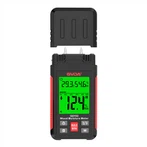How to avoid short circuits when measuring the voltage of various lines on a circuit board with a multimeter
Before measuring any electronic circuit component with a multimeter, it is necessary to first check the status of the multimeter before your probe comes into contact with the electronic circuit component. For example, when measuring DC voltage, it is necessary to set the gear to the DC voltage level. If you do not know the circuit voltage, the first step is to set the gear to the highest level. If measuring AC voltage, it is necessary to set it to the relevant AC gear. If you do not know the voltage level, you must also set it to the highest gear first to measure. After measuring the data at the highest gear, adjust the gear as needed for precise measurement. Reminding everyone to check the status of the multimeter is to prevent some people from directly measuring voltage when the multimeter is in resistance or capacitance range, which may cause short circuits and burn things. So before measuring anything, it is important to develop a habit of checking the gear status of the multimeter and confirming that it is correct before conducting the measurement.
First of all, let's answer the main question: How to avoid short circuits when measuring the voltage of various lines on the circuit board with a multimeter
1. Sharp multimeter tip as possible
When I was still in school, I followed a habit of my senior brother, which was that I liked to polish the metal front end of all my multimeter pens very sharp. The sharp multimeter pen tip can contact the circuit board area as small as possible, and for measuring small area SMD components, it can prevent the pen tip from being too thick and accidentally touching adjacent contacts.
2. Find excess black pens and transform them into crocodile clips
Find an extra pair of pens, cut the black pen on the end with the pen in hand, and use a crocodile clip to solder it on. Set it aside. Of course, if you don't want to make it yourself, you can buy ready-made ones with both red and black pens.
To measure the voltage of a circuit board, first determine whether the part to be measured on the circuit board is DC voltage or AC voltage. If it is DC voltage, first set the gear of the multimeter to the DC voltage measurement gear, and then hold a black pen in one hand and a red pen in the other hand. The black pens are all ground terminals, and try to find a ground point as close as possible that is easy to place and touch. Generally, the ground points are relatively large on the circuit board. Separate the red pen and measure the circuit that needs to be measured. At this point, the sharper the sharpened tip of the multimeter, the more convenient it is to measure some fine chip component circuits. If it is not convenient for both hands to hold the pens separately, as we mentioned earlier, a spare pen with a crocodile clip can be used. Connect the black pen with the crocodile clip to the grounding point of the circuit board, and the red pen can measure the entire DC circuit at will.
If you encounter a particularly thin circuit and do not have a sharp enough pen tip, you can find a sewing needle and wrap it around the pen tip with uninsulated copper wire, which can also be measured.






